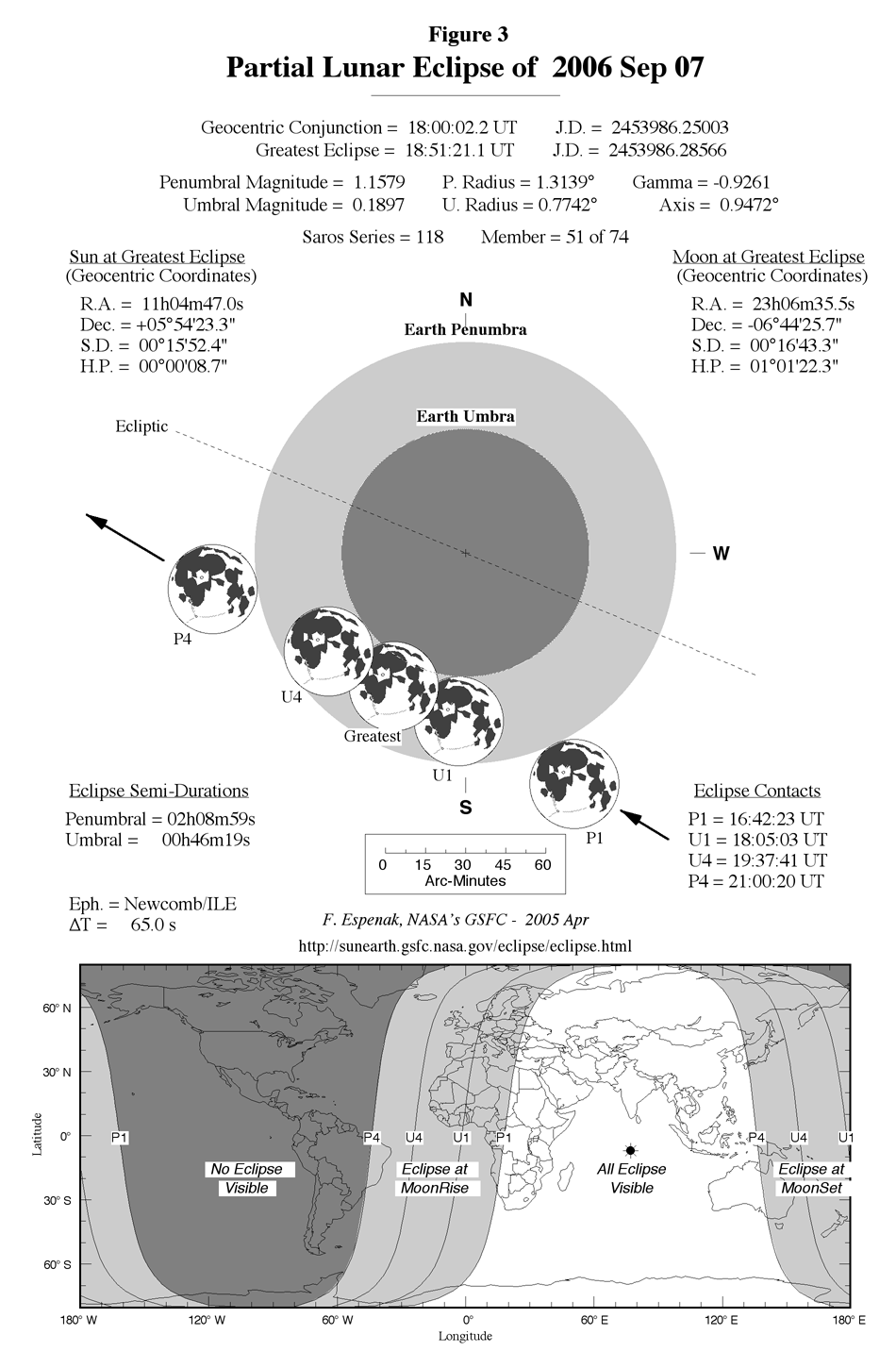.

Qui sotto vi riporto la comunicazione presente nel sito delle eclissi della NASA.
The second lunar eclipse of the year is a rather small partial eclipse.
The penumbral phase begins at 16:42 UT, but most observers will not be able to visually detect the faint shadow until about
17:30 UT. A timetable for the major phases of the eclipse is as follows:
Penumbral Eclipse Begins: 16:42:23 UT 18:42:23 TL
Partial Eclipse Begins: 18:05:03 UT 20:05:03 TL
Greatest Eclipse: 18:51:21 UT 20:51:21 TL
Partial Eclipse Ends: 19:37:41 UT 21:37:41 TL
Penumbral Eclipse Ends: 21:00:20 UT 23:00:20 TL
In spite of the fact that the eclipse is shallow (the Moon's northern limb dips just 6.3 arc-minutes into Earth's dark umbral shadow),
the partial phase lasts over 1 1/2 hours. This is due to the grazing geometry of the Moon and umbra.
At the instant of greatest eclipse (18:51 UT), the Moon will stand near the zenith for observers in the central Indian Ocean.
At that time, the umbral eclipse magnitude will be 0.190. The event is best seen from Africa, Asia, Australia and Eastern
Europe. Unfortunately, none of the eclipse is visible from North America. The Moon's path through Earth's shadows as well
as a map illustrating worldwide visibility is shown in Figure 4 (NdR: l'immagine qui sotto).

L'immagine qui sopra č stata presa dal sito di Goddard
Space Flight Center ed č opera di Fred Espenak e collaboratori, ai quali va il nostro ringraziamento per l'utilizzazione
del loro materiale. Cliccando l'immagine l'aprirete a 950 x 1450 pixel.

L'immagine ha una dimensione di 640 x 798 pixel, č a 16,8 milioni di colori; occupa 11,7 MB, qui compressi a 116 KB. Cliccando l'immagine
l'aprirete a 1280 x 1596 pixel.